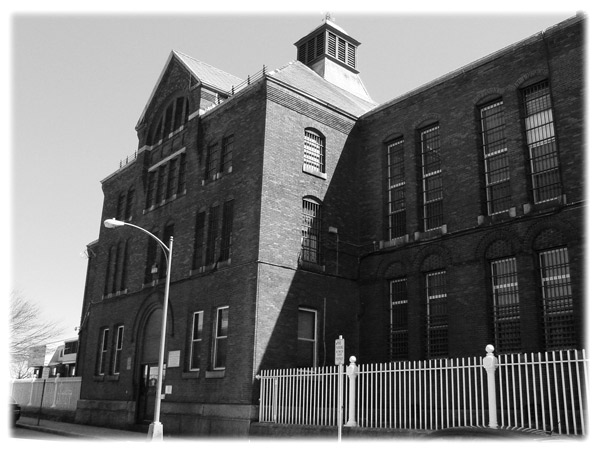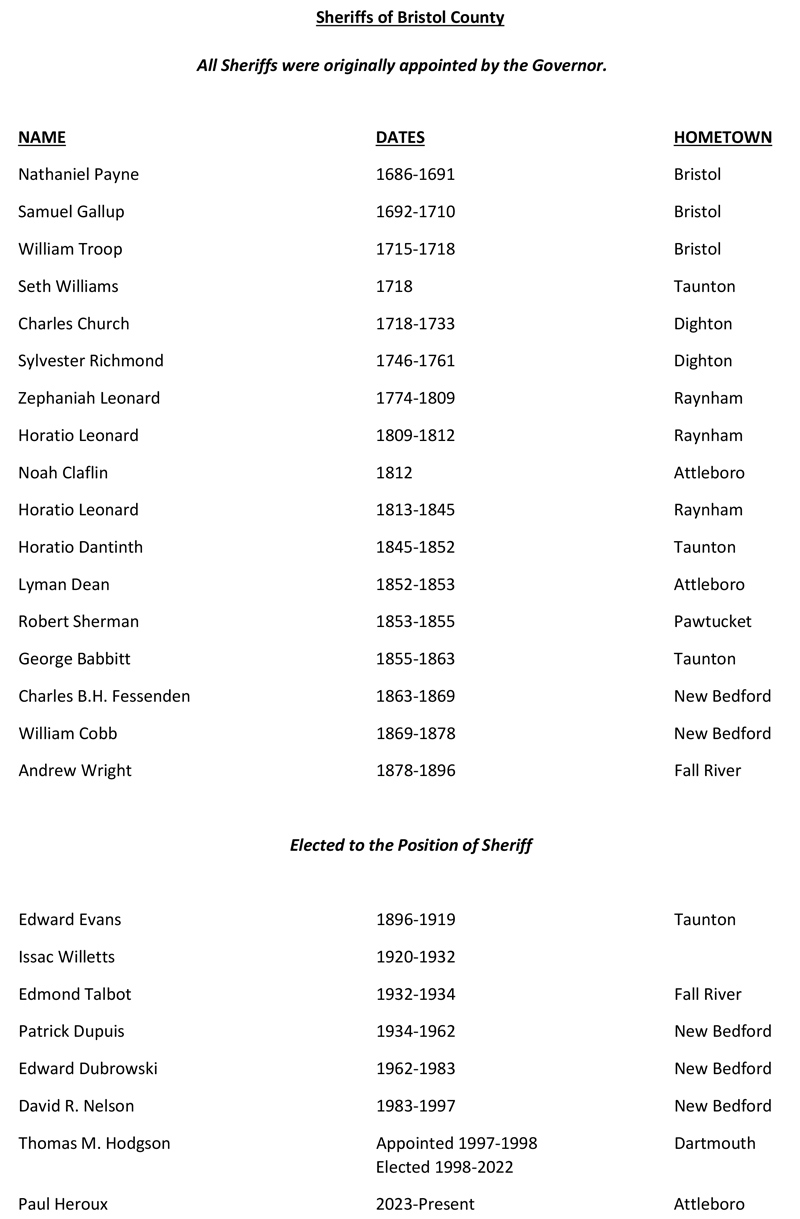As
the Old Colony in Massachusetts was settled,
shortly after the arrival of the Pilgrims
at Plymouth, the county form of government
began with the establishment of Plymouth
County. Most of Southeastern Massachusetts
and Cape Cod were under the control of Plymouth
County Government.
By 1685, the area was considered too large
for one county government to control as
the distances were too great for all the
citizens to conduct business in the shire
town of Plymouth. The original Plymouth
County Government was split into three separate
counties, Bristol, Barnstable, and Plymouth.
The shire town of Bristol County was the
Town of Bristol, currently in Rhode Island,
but at that time was part of the Massachusetts
Bay Colony. There was considerable county
business taking place in the Town of Taunton
with many local inhabitants having to travel
to the Town of Bristol by way of Tremont
Street, which at the time was called Bristol
Path.
In 1746, the Massachusetts Bay Colony and
the colony of Rhode Island and Providence
Plantations exchanged territory in an effort
to satisfy boundary lines.
In this exchange, the Rhode Island Colony
relinquished the area now known as Fall
River and the Massachusetts Bay Colony relinquished
the Town of Bristol. With the loss of the
Town of Bristol, Taunton became the shire
town for Bristol County. The shire town
became the home for County Government and
also served as the site for the County Court
Houses and ‘Gaol’ (pronounced
Jail) as the lock-up was called.
In December 1746, the local ‘Court
of General Sessions of Peace’ met
to determine the course of action to secure
a proper courthouse and jail. The orders
recorded on that day were: Ordered by the
Court that the school house in Taunton shall
be for the present impressed for a ‘Gaol’
and that Samuel Leonard, John Godfrey and
Samuel White, Esqrs, be a committee set
up to see that the said school house be
made as secure as may be fore the safe custody
of all persons that may be committed thereto
with the utmost dispatch and that Sean Williams
2nd shall take care to secure the two prisoners
now in custody and all others that shall
be committed in the meantime.
Ordered by the Court that Seth Williams
George Leonard, Samuel Leonard, John Godfrey,
and Samuel White, Esqrs, be a committee
to look out for a suitable place for a standing
of a “gaol” and County House
in the Town of Taunton and know what the
land for erecting said houses or may be
purchased for and make a report of their
doings thereon at the adjournment of this
Court.
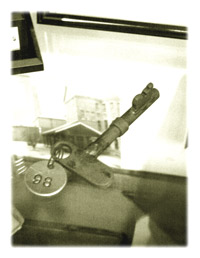
A month
later, the committee was ready to make its
report. For a new courthouse, the committee
chose to site the building on the north
part of the old Taunton Training Field that
once extended from the present Taunton Green
along Main Street as far easterly as Longmeadow
Road. The chose courthouse site is now the
front lawn of the present Bristol County
Courthouse.
As for the ‘Gaol’, the committee
recommended a site owned at the time by
Samuel White and Simeon Tisdale near ‘the
spring’ on the road that leads by
Tisdale’s home to the home of Robert
Crossman. Robert Crossman’s home still
stands on Cohannet Street across from the
Old Colony Y.M.C.A.
The following
is a partial report of the committee that
was formed to build a new ‘Gaol’:
“The
Gaol to be thirty foot long and fourteen
foot wide, two storys high and fourteen
foot stud, to be studded with sawed stuff
of six inches thick to be framed close together
with a chimney in the middle suitable for
a gaol. The house of the prison keeper to
be seventeen foot wide and twenty three
foot long, two story high besides the entry
between the Gaol and dwelling house and
to be fourteen foot stud with a suitable
chimney and cellar.
By 1749, the County ‘Gaol’ had
not yet been finished and the County of
Bristol raised eleven hundred pounds to
secure its completion. The ‘Gaol’
was to be called from this point on “His
Majesty’s Jail” however a few
years later County Officers referred to
the facility as the House of Correction
for the County of Bristol. This building
stood opposite the south west corner of
Taunton Green. The Taunton ‘Gaol’
was visited on June 8, 1762 by a notable
lawyer from Boston named John Adams. John
Adams, who later became our country’s
second President, wrote in his diary about
his visit to Taunton. John Adams recalled
his impression of the first justice of the
local court, the Honorable George Leonard.
Adams thought Judge Leonard was too arbitrary
as the judge committed two 80 year old gentlemen
to the custody of the court officer after
the two old gents spoke to loud in his court
room. After the ‘Boston Massacre’,
John Adams would later rise in defense of
the British Soldiers and argue their case
against the prosecutor Robert Treat Paine,
a prominent Taunton attorney who was an
original signer of the Declaration of Independence.
The wooden building was used to secure prisoners
until 1785. After numerous escapes the County
of Bristol authorized a tax to raise 1,500
pounds to erect a more secure lock-up on
the same site. The new ‘Gaol’
was built of wood and painted red and cost
617 pounds to complete.
As the 19th Century began and the Taunton
Community continued to grow it became apparent
that the old wooden jail was obsolete. Bristol
County Officials began actively seeking
an appropriate site for a new stone jail.
A site was secured for a new stone jail
on January 30, 1818 at the corner of ‘Mill
Street’ and ‘Old Broadway’.
The present Court Street was originally
called Mill Street and the present day Washington
Street was once called Broadway.
Dighton’s ‘Big Gilbert’
Briggs was in charge of the stone work with
much of the carpentry work performed by
Abiezer Dean 2nd. The stone of this project
was secured from quarries in Fall River.
Abiezer Dean, the carpenter was sure to
do a good job as his father became the first
jail manager to serve in his new jail. The
elder Dean served for seven years in this
facility and was succeeded by his son, the
carpenter, Abeizer Dean who in turn was
followed by his brother Joseph Dean.
Many of the communities in the southern
part of the County of Bristol would often
complain that the distances were too great
to travel to the County Seat of Taunton
when transacting County business. This problem
led to repeated attempts to create a ‘half-shire’
status for community in the southern part
of the district. New Bedford and Fall River
competed for that designation as a ‘half-shire’
town with both communities boasting about
the great amounts of ruffians and criminals
that reside at each place.
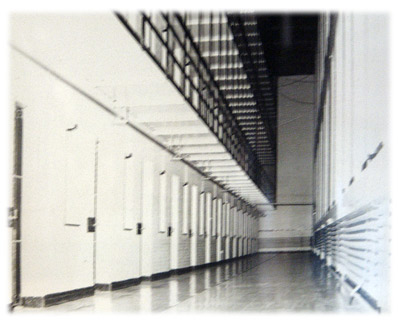
New Bedford won that competition and the
Massachusetts State Senate passed a bill
on February 29, 1828 to designate that community
as ‘half-shire’ town which allowed
the construction of a jail and courthouse
to serve the southern district of the county.
The Massachusetts Legislature confirmed
the bill on March 13 of that same year.
In June of 1828, the County Commissioners
purchased an acre and a half tract of land
belonging to the estate of Abraham Russell.
The original New Bedford Jail was opened
on Monday, October 5, 1829 with William
Reed as the first jail keeper. The County
Commissioners appropriated $13,236.30 for
its construction. This facility was located
on Court Street and is no longer used as
a jail. This structure is currently used
for Civil Processing. The building had been
previously used as the home of the Sheriff
and his family.
The County Commissioners soon recognized
the need for additional facilities and authorized
the construction of the New Bedford House
of Correction Building on the east side
of the original jail lot between Court and
Union Streets.
The old Bristol County Jail on Court Street
in Taunton was quickly becoming obsolete
which led to the acquisition of new site
on land belonging to the estate of William
Hodges on the east side of the present Hodges
Avenue. The new Hodges Avenue Jail was completed
in 1873 at a cost of $160,000. This facility
would get local acclaim as the temporary
home for an accused axe murderer from Fall
River named Lizzie Borden. The Fall River
socialite was detained at the Taunton Jail
for ten months while awaiting trial for
the murder of her father, Andrew Borden
in August of 1892.
The Hodges Avenue Jail in Taunton had served
the citizens of Bristol County until 1923
when it closed its’ doors for the
final time as a place to house prisoners.
The building remained vacant for ten years
until the David F. Adams Post of the Veterans
of Foreign Wars rented the building for
their meetings. The Veterans group used
the building for many years. They finally
purchased the building for $2,500 following
the Second World War. It was dedicated as
a permanent memorial to U.S. Veterans.
The County Commissioners recognized that
the old Jail on Court Street in New Bedford
had long outlived its usefulness by the
mid 1880’s and began plans to replace
the old stone jail. This effort led to the
construction of the new 287 cell Ash Street
Facility in 1888 at a cost of $80,000.
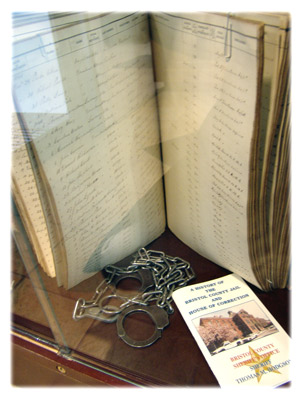
Over 85 years ago, county officials began
construction on a large stone jail on Bay
Street in Fall River however; the introduction
of the Probation Program made the new facility
obsolete. The County Jail in Fall River
never opened and was sold to the City of
Fall River in 1915 for $165,000 for use
as Home for the Poor. Once the Taunton facility
closed, the Ash Street Facility became the
primary center for housing prisoners within
Bristol County for much of the Twentieth
Century. In 1985, the County Commissioners
acquired the old St. Mary’s Home on
Kempton Street in New Bedford and transformed
that facility into the Eastern Massachusetts
Correctional Addiction Center. The name
of this center was changed in 1997 to honor
retired Sheriff David R. Nelson.
A large parcel of land was acquired by the
County Commissioners in the late 1980’s
for a massive new correctional facility
in Dartmouth, along Faunce Corner Road.
The current Pre-Release Facility was opened
in the spring of 1990 and the Dartmouth
House of Correction opened in the fall of
that year. The Dartmouth Campus was improved
in 1998 with the opening of the Modular
Units.
The Bristol County Sheriff’s Office
has evolved into one of the premier law
enforcement and correctional institutions
in the country. There have been 25 men that
have held the post of Sheriff of Bristol
County. Currently, Sheriff Paul Heroux holds the respected position.
The Office of Sheriff has evolved into a major law enforcement
resource that is valued by every city and
town in the country.
|



